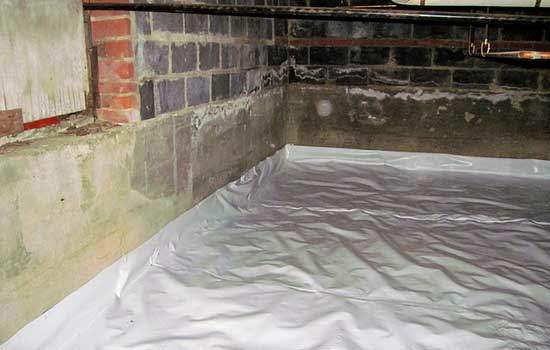At PuroClean home Emergency Services in Madison, we are constantly inspecting and evaluating crawl spaces for mold and water damage. Once we determine the issue, one of the things we look for is the condition of the vapor barrier. Is it ripped, incomplete, or is it even there at all?
Table of Contents

What is a Vapor Barrier?
What is a vapor barrier? It is kind of exactly what it sounds like. A barrier that prevents “vapor” a.k.a. moisture from going where you don’t want it to go. They are used anywhere there is potential for condensation between two distinct areas. For example, between the ground and your crawlspace, or between the drywall and the insulation in a wall.
Why Do You Need a Vapor Barrier?
Why do we need a vapor barrier? The main reason vapor barriers are used is to minimize condensation between two separate areas in the home that may have different temperatures. Any two areas that exist in proximity to each other and have different temperatures can form condensation if enough moisture is present. Think of a cold drink on a hot day and how the glass can get wet from condensation. One side of the glass is cold, and the other side is hot. The water provides the moisture, and soon condensation forms.
In Southern Indiana, the majority of homes have crawl spaces. A crawl space is dug out of the dirt under the house and allows room for running water lines and HVAC lines. In the typical home this space is close to or slightly cooler than the outside temperature. Since the temperature inside the home is usually different, crawlspaces present a great place to form condensation. Thus, in most homes, a vapor barrier is put down over the dirt to minimize moisture coming out of the ground.
If there is a large amount of moisture available from the ground under your house it can form as water droplets on the joists and subfloor. Over time, the constant exposure to this type of moisture can cause mold to grow. Although not the only potential source for moisture in the crawl space, having something between it and the underside of your house goes a long way in preventing mold and eventually rot.
What Does It Look Like?
The most common vapor barrier you see is a layer of 6 mil or thicker plastic covering all the dirt in the crawlspace. This thick plastic cover is both economical and very effective. In some homes you will also find concrete floors similar to a basement, and others will use just gravel. Most manufactured homes use a stretched plastic barrier, called a belly pan, between the rails and joists.
More Information
A vapor barrier can be a great asset in the case of a water loss. Once the water is removed from the crawlspace, the intact vapor barrier will continue to work as it did before, without needing to be removed or replaced.
In recent years, a school of thought has developed that takes crawlspace moisture protection even further. Some professionals have started insulating the walls and installing a heavier vapor barrier. They then block off the vents to limit outside air influencing the space. They may go even farther and install a dehumidifier, and in some cases, create an access port to the HVAC system. This allows the crawlspace to be both protected by a vapor barrier and also conditioned to the same temperature and humidity level as the home. The logic behind this process is that by keeping both sides of the floor the same temperature, condensation will not form.
No matter what type of protective barrier you use, they are a helpful measure against moisture and the damage it can cause, saving you money and frustration.


